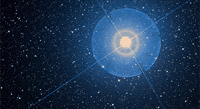Vicki Davis has a nice compilation of resources for teaching coding to kids of all ages. Of the fifteen things she lists, the ones I’ve used, like Scratch and the Raspberry Pi have been great.
↬ Ms. Douglass.
Middle and High School … from a Montessori Point of View
Vicki Davis has a nice compilation of resources for teaching coding to kids of all ages. Of the fifteen things she lists, the ones I’ve used, like Scratch and the Raspberry Pi have been great.
↬ Ms. Douglass.
RadioLab has an excellent podcast featuring Jay Melosh, a geophysicist who specializes in impact craters, and who advocates the hypothesis that the entire extinction event that killed off the dinosaurs at the boundary between the Cretaceous and Tertiary (the K-T boundary) took place over a period of two hours. The asteroid impact vaporized the crust of the Earth where it hit (near the Yucatan peninsula) and blasted this rock gas into space. There it cooled down to create little glass particles that reentered the atmosphere. On reentry the glass burned up, but there was so much of it that it raised the temperature of the atmosphere by several hundred degrees Celsius. Anything near the surface (mostly the dinosaurs) was cooked, but anything living just beneath the surface could have survived.
The trailer for a documentary about what it’s like to live as a single parent, working on a single close-to-minimum wage paycheck, in the United States.

A wonderful 3d, rotate and zoom, viewer of our galaxy via NASA’s Spitzer Space telescope.

A summary of the recent discovery of gravity waves generated during the massive inflationary period of the Big Bang.
Matt Strassler also goes into what we know about what happened before inflation (we don’t know) and after inflation (we’re living in it).
As noted previously, the Finns have no homework, while the South Koreans have a lot. Yet these two countries’ educational systems are ranked 1 and 2 in the world. Misty Adoniou summarizes some of the research into the effectiveness of homework.
A key point: there are two types of homework, neither of which may be awfully useful:
The type of homework I assign differs by subject. For science, I’ll often ask students to do reading assignments and make vocabulary cards before we cover a topic in class. It’s to give them a little preparation and, theoretically, allows us to do more higher-level, application type projects in class–this is the same as the idea behind flipped classrooms. For math, the objective is for students to get extra practice. Much of algebra and calculus relies on pattern recognition–when you can use integration by substitution for example–so some students benefit from extra practice after class.

Our steam distillation apparatus for extracting lavender oil started off fairly simply — a steamer connected to a glass tubing running under the cold water tap to a collection flask — and evolved from there. One of the final tweaks we attempted, was to make a coil in the glass tubing so the steam would have a longer transit through the ice-water bath to enhance condensation.
We heated the glass using a small butane burner until it became pliable, then bent the tube into shape around a piece of wet wood. Using the wood was not as effective as we’d hoped because the glass tubing is fairly thin and cools down quickly when in contact with the water.
You also have to be very careful when bending the tubing to make sure you don’t pull on it. Pulling stretches the glass, making the walls thinner, making it more likely to break. My students discovered this the hard way.